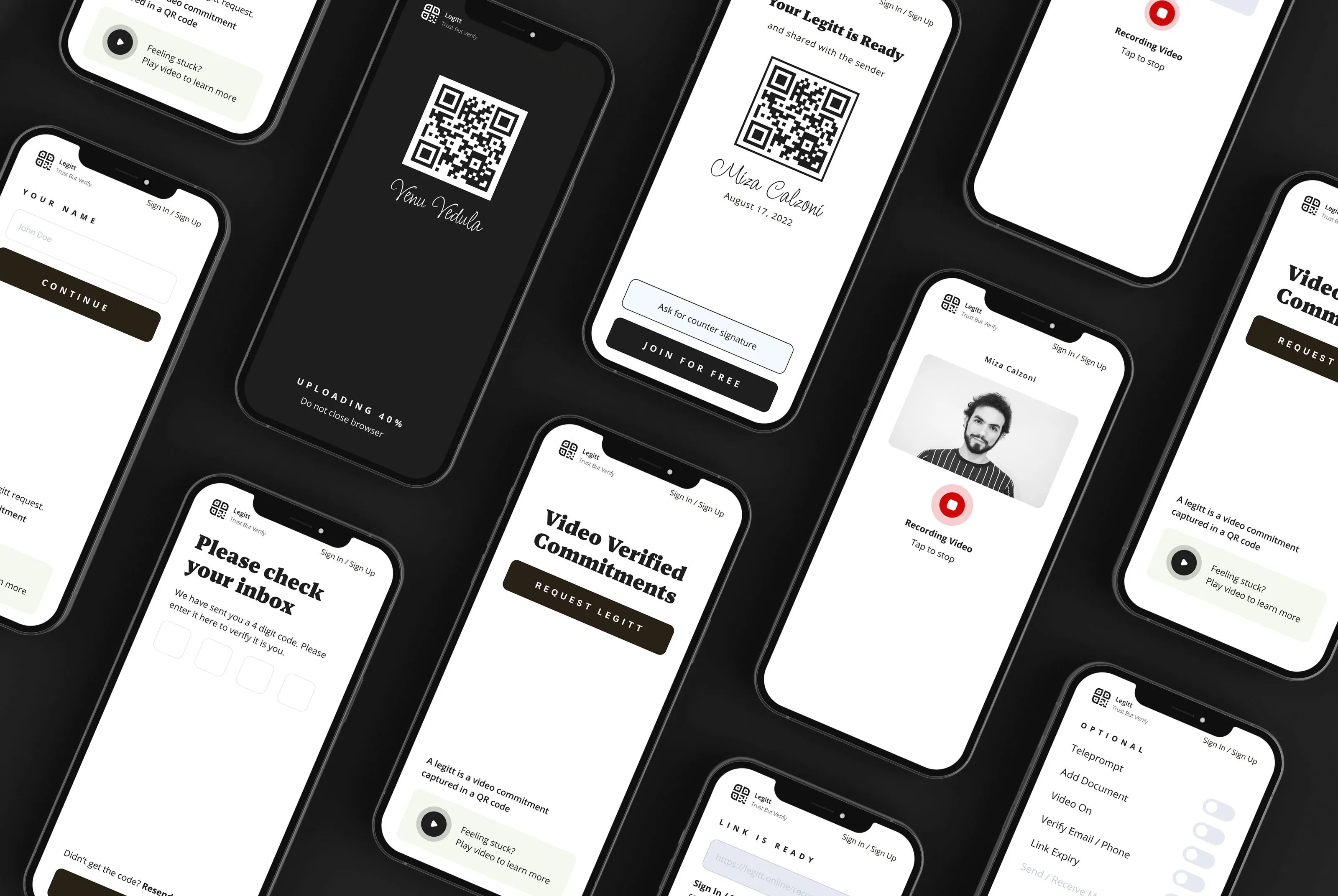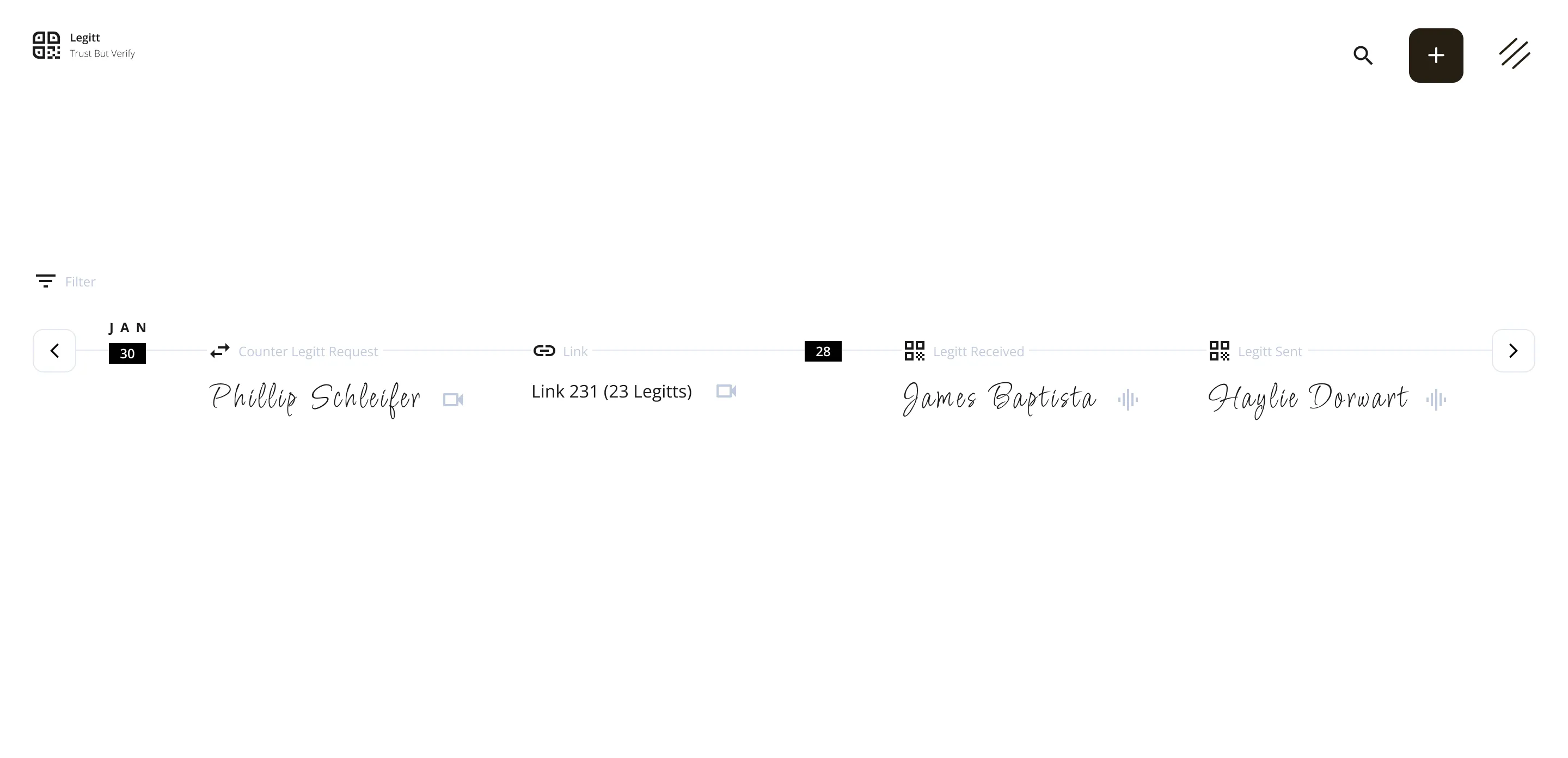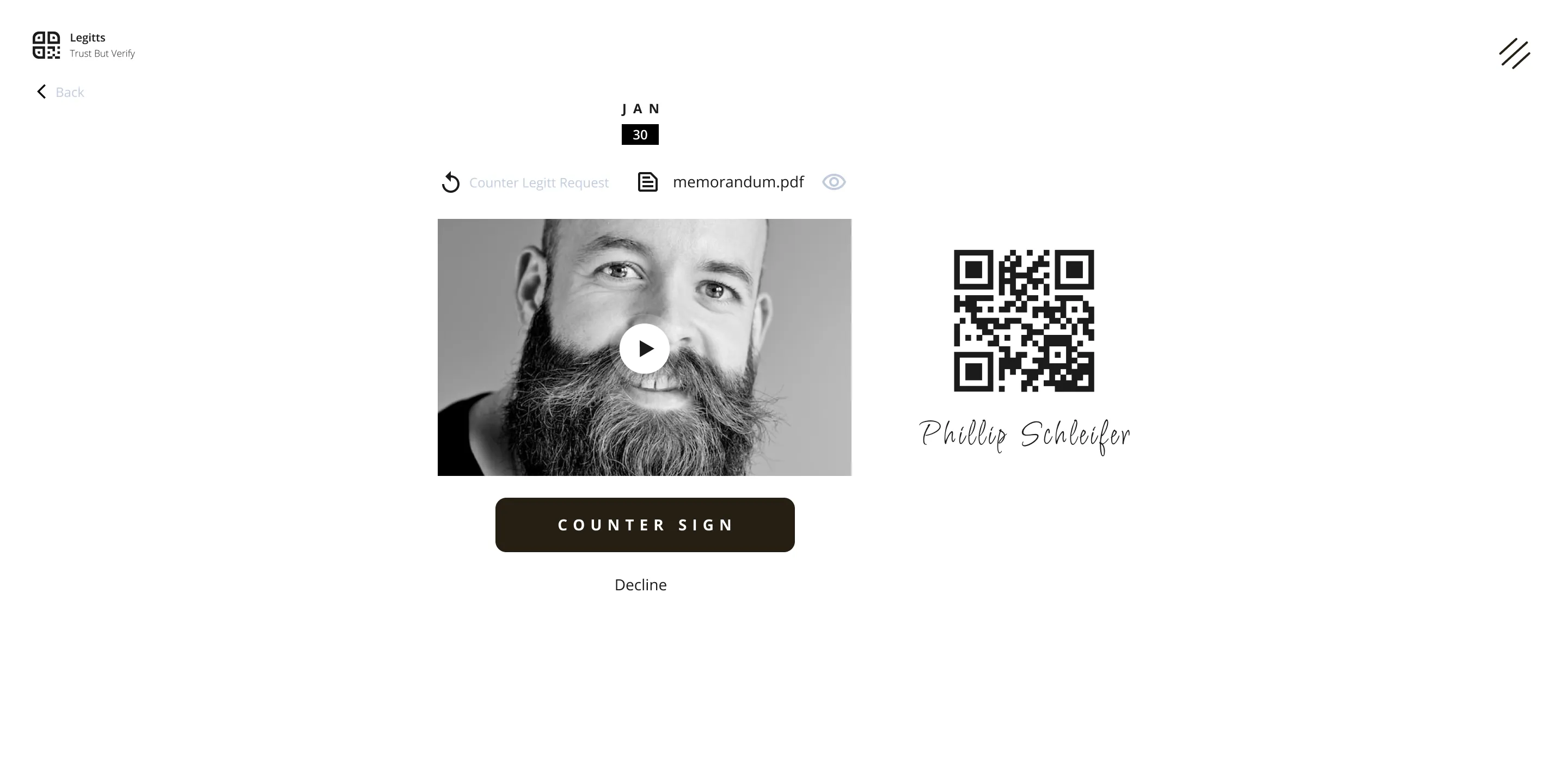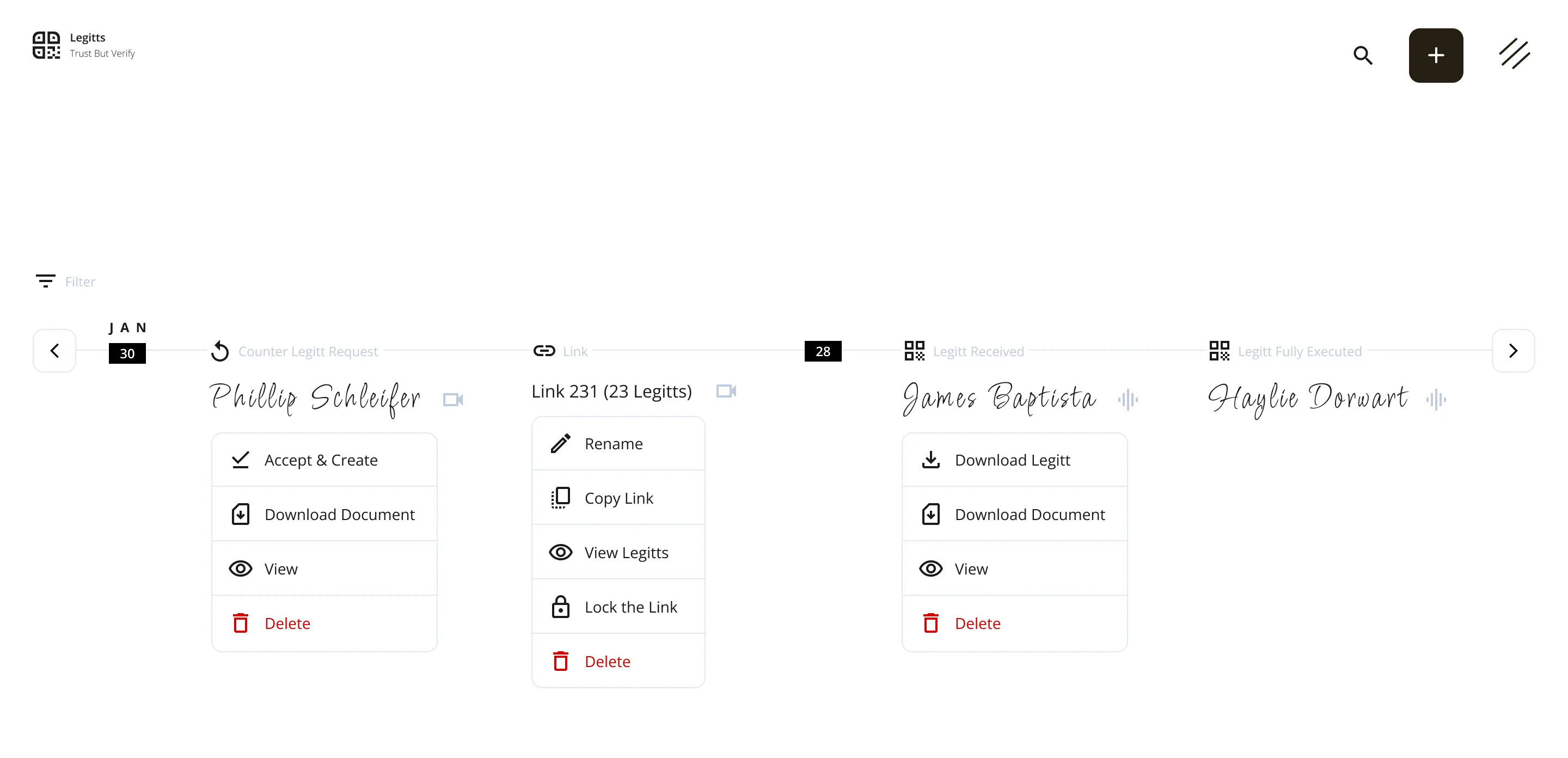Legitt.online
/ 5 min read
Updated:Table of Contents

Introduction: Reimagining the Signature for the Digital Age
Electronic signatures have streamlined document workflows, but often fall short in replicating the trust, security, and personal connection of a handwritten signature. Legitt.online was created to bridge this gap, offering a novel approach: video signatures. By allowing users to record a short video acknowledging the document, Legitt.online aimed to enhance authenticity, verify identity more robustly, and add a much-needed personal touch to the digital signing process.
The Problem: The Trust Deficit in E-Signatures
Despite their convenience, traditional e-signature platforms face several user experience and adoption challenges:
- Impersonality & Lack of Connection: E-signatures often feel detached and transactional, lacking the personal affirmation of a physical signature.
- Security & Authenticity Concerns: Users worry about the ease of forgery and the difficulty in definitively verifying the signer’s identity behind a simple digital mark or typed name.
- Process Friction: For some users, particularly those less tech-savvy, the multi-step process of uploading, placing signature fields, signing, downloading, and saving can be confusing and cumbersome.
- Limited Use Cases: Certain sensitive or legally significant documents still require higher levels of assurance than basic e-signatures provide.
These limitations highlighted a need for an e-signature solution that felt more human, secure, and trustworthy.
The Vision: Video Verification for Enhanced Trust
The core idea behind Legitt.online was to leverage video as a means of verification and personalization. Instead of just a static digital mark, users would record themselves:
- Visually confirming their identity.
- Verbally acknowledging they have read, understood, and agreed to the document’s contents.
This approach aimed to directly address the core pain points by providing visual proof of presence and intent, creating a stronger, more reliable digital “handshake.”
The Design Process: Crafting an Intuitive Video Signing Flow
Our design process focused on making this innovative signing method simple, secure, and reassuring for the user.
1. Research & Understanding:
- Analyzed user feedback on existing e-signature platforms to confirm and elaborate on the identified pain points (impersonality, security fears, complexity).
- Explored user attitudes towards using video for verification – identifying potential concerns (privacy, camera shyness) and benefits (perceived security, personalization).
- Mapped out the ideal user journey, focusing on minimizing steps and cognitive load.
2. Ideation & Concept Development:
- Brainstormed various ways to integrate video seamlessly into the signing workflow.
- Sketched different UI approaches for initiating the video recording, providing clear instructions, and displaying the final verified document.
- Focused on building user confidence throughout the process, especially given the novelty of video signing.
3. Design & Prototyping:
- Wireframing: Created low-fidelity wireframes outlining the screen flow: Document Upload -> Initiate Video Verification -> Recording Interface (with prompts) -> Review & Confirmation -> Final Document View (with embedded/linked video proof).
- UI Design: Developed a clean, modern, and trustworthy interface. Used clear typography, intuitive icons, and prominent calls-to-action (CTAs) to guide the user. Employed visual cues (e.g., recording indicators, confirmation messages) to provide constant feedback.
- Prototyping: Built interactive prototypes to simulate the video recording and review process, allowing for early usability testing.


4. Usability Testing & Iteration:
- Conducted testing sessions with target users (individuals and business professionals) to evaluate the video signing flow.
- Gathered feedback on clarity of instructions, ease of recording, perceived security, and overall user comfort.
- Iterated on the design based on feedback. For example, refining the on-screen prompts during recording to ensure users clearly stated the required information, and simplifying the review step before final confirmation.
The Solution: The Legitt.online Video Verification Experience
Legitt.online provides a streamlined and secure video signing workflow:
- Upload Document: Users start by uploading the document needing a signature.
- Initiate Video Verification: Instead of drawing or typing a signature, users select the “Sign with Video” option.
- Guided Video Recording: The platform prompts the user to record a short video using their device’s camera. Clear on-screen instructions guide them to state key information, such as their name and their understanding/agreement with the document content (e.g., “I, [Name], confirm I have read and agree to the terms outlined in this document: [Document Title]”).
- Automatic Attachment: Once recorded and approved by the user, the video file is securely linked or embedded within the document metadata.
- Review & Confirm: Users can review the document with the attached video verification before finalizing.
- Secure & Share: The final, video-verified document is ready to be saved or shared, carrying a higher degree of assurance regarding the signer’s identity and intent.
Supporting UX Enhancements:
- Clean Interface: A minimalist design reduces clutter and focuses the user on the task.
- Clear Guidance: Step-by-step instructions and visual cues demystify the process.
- Feedback Mechanisms: Confirmation messages and status indicators reassure users their actions were successful.


The Outcome: Increased Trust, Adoption, and Satisfaction
The introduction of video verification on Legitt.online yielded significant positive results:
- Enhanced User Trust & Confidence: The primary goal was achieved – users reported feeling significantly more confident in the authenticity and security of documents signed via video compared to traditional e-signatures. The visual confirmation addressed key anxieties about fraud.
- Improved User Satisfaction: The novel, more personal approach was well-received, making a typically dry process more engaging and satisfying for many users.
- Increased Platform Adoption: Positive word-of-mouth and the unique value proposition attracted new individual and business users seeking a higher level of signature assurance, leading to increased usage and market differentiation.
- Streamlined Workflows: By providing a reliable and efficient method for higher-assurance signing, Legitt.online helped users complete important transactions more easily, saving time and effort compared to reverting to physical signatures for sensitive documents.
Conclusion: A More Human Approach to Digital Agreements
Legitt.online successfully addressed key weaknesses in the traditional e-signature market by introducing video verification. Through a user-centered design process focused on simplicity, security, and trust, the platform delivered an innovative solution that resonated with users. It demonstrated that incorporating a human element, like video, into digital processes can significantly enhance user confidence and satisfaction, ultimately driving adoption and improving how agreements are made online.